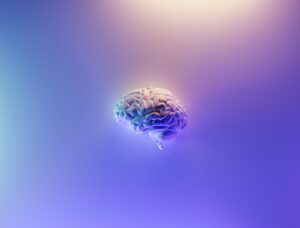What does hypnotherapy do to the human brain? It may surprise you to learn that it does all sorts of things. In fact, hypnosis is so powerful that it can have some unpleasant side effects. People who undergo hypnosis may experience anxiety, panic attacks, body/self-image distortions, comprehension and concentration loss, delusional thinking, uncontrollable weeping, and nausea. However, it can also help them become more present and in the moment.
Reduces Blood Flow
 Hypnosis has been practiced in Western psychology since the 19th century. Historically, it has been used for everything from managing pain during childbirth to stopping smoking. The evidence for hypnosis’ effectiveness is mixed and difficult to implement in practical applications.
Hypnosis has been practiced in Western psychology since the 19th century. Historically, it has been used for everything from managing pain during childbirth to stopping smoking. The evidence for hypnosis’ effectiveness is mixed and difficult to implement in practical applications.
Although it works similarly to falling asleep, researchers are still unsure about how effective it is. Using hypnosis, people are able to focus on a single task while their brains receive a reduced supply of blood.
Various imaging methods have been used to assess the effects of hypnosis. MRI PET, CT, EEG, and EOG scans are among the imaging methods used. These scans allow doctors to see how the brain works, which may be useful in assessing pain. However, it is not known exactly what happens when hypnosis patients receive pain medication. The study authors did note that hypnosis affects the brain and has the potential to alter the metabolic activity of the brain.
While the vagus nerve may not be directly involved in hypnosis, it does affect the brain’s ability to focus. When hypnosis is effective, it helps the vagus nerve improve the functioning of the brain. This may help people with irritable bowel syndrome and inflammatory bowel disease. Furthermore, the vagus nerve represents an important link between diet and disease.
Other areas of the brain that are affected by hypnosis include the right-sided extrastriate area, the anterior cingulate cortex, the insula, and the posterior cingulate cortex. Researchers have found that the hypnosis-related fMRI in the brainstem, right insula, and the dACC are the most affected. Overall, these regions show a decrease in activity during hypnosis.
 Rewires the Brain
Rewires the Brain
Hypnotherapy is accepted in science. The use of hypnosis to rewire the brain is not a new concept, as it has been practiced throughout history.
Military surgeons used it during the U.S. Civil War to help them deal with the pain of battle, and James Esdaile practiced it to treat various illnesses in India.
It is also used as a method of self-hypnosis to reduce stress, pain, and anxiety, improve physical health, and break negative habits.
Researchers are still trying to understand the full implications of the research on the neuroplasticity of the human brain.
Recent studies have shown that the brain is malleable and flexible and can change throughout life. Dr. Joe Dispenza, a renowned hypnotherapist and expert in the field of psychotherapy, says neuroplasticity is a key feature of the human brain. Neuroplasticity is the process by which permanent learning occurs and can even reverse obsessive-compulsive behavior.
Interestingly, the study also found that the use of hypnosis can actually rewire the human brain. This means that the brain changes are not merely rearranged in a different way, but new patterns and connections are formed. When a person undergoes hypnosis, the resultant changes will be noticeable. Afterwards, the brain will be rewired in a way that is completely opposite to what happened before.
Reduces Connectivity
Researchers found that when people undergo hypnotherapy, their functional connectivity in the DMN region is decreased. This reduction in connectivity is thought to reflect the reduced self-awareness associated with hypnotizability. While more studies are needed to confirm this conclusion, the results of this study support this notion. Hypnotherapy is an effective treatment for overcoming fear, anxiety, and other phobias.
The researchers found that the DLPFC and insula increased connectivity. These two areas are involved in body control, pain perception, and emotion. Insular activity is also involved in pain processing. Hypnosis has been shown to affect somatic perception and control. Insular activity in the DLPFC is associated with pain control and empathy. Therefore, this reduction in connectivity to the brain could contribute to hypnosis.
Other areas affected by hypnosis are the medial prefrontal cortex, the insula, and the ECN. These brain regions are known to be involved in the regulation of emotion and behavior. The changes in connectivity to these regions are similar to those seen during hypnosis and any other focused task. Further, these findings could lead to groundbreaking research on the effectiveness of hypnosis.
Functional connectivity between the executive control and insular area of the SN was altered during hypnosis. Highs exhibited increased connectivity between the bilateral DLPFC and the ipsilateral insula during hypnosis, while lows showed no difference among any state. Higher connectivity between these areas was observed in the subjects who were the most intensely hypnotized. The decreased functional connectivity could reflect trait differences in hypnotizability, but the results were not conclusive.
 Helps People Live in the Moment
Helps People Live in the Moment
The science of hypnosis dates back more than 125 years. Hypnotherapy has helped people overcome pain and other symptoms, reduce phobias, and improve their mental health.
Hypnotherapy is used by many people, and Chris, an entrepreneur, seeks to improve his confidence and ability to speak with clients. He feels like he’s pushing away potential clients. Hypnotherapy helps him feel more comfortable and confident in speaking with clients, and he can finally live in the moment!
Whether you’re suffering from stress and anxiety or simply want to live in the moment, hypnosis can help. It’s used by people who are overweight, smoking cessation, and controlling substance use. It can also help people with phobias or other problems, including fibromyalgia and asthma. You can even use hypnosis to reduce pain before a wound debridement.
Rewires the Default Mode Network
Recent research has suggested that hypnosis rewires the default mode network, a set of brain regions that are active during low-demand task conditions. While DMN has been associated with task-independent thinking, episodic memory, semantic processing, and self-awareness, experiential correlates remain elusive. If hypnosis rewires the default mode network, this study will help to explain how the brain processes suggestions made by therapists.

